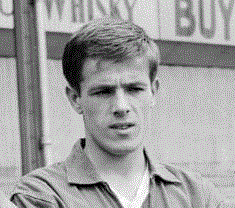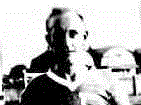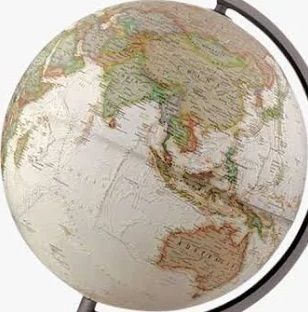
Jimmy Hendren

Pat Stanton
St. Louis with Illinois
- Coutts, Biggam, Hendren & Easton

Jimmy Easton
Chuck Carlson, the US soccer-history researcher based in Chicago itself sent an email from Illinois having read a piece on this site about the Tallman's of Joilet and Braidwood (See: Chicago). And in it he sent me four names, all prominent in the establishment of football in Illinois right down to and including St. Louis across the river in Missouri. The names were David Coutts, Charles Biggam and the Jimmys, Hendren and Easton. The connections are the game and coal, with each literally playing his role in a distinctive way.
Illinois sat on the second-biggest coal deposit in the USA - thick seams where a miner could stand rather than, as mostly in Scotland, crawl to cut. And from about 1860 exploitation began with by the turn of the century experienced hewers drawn in, not least from our shores.

And as the in-coming Scots settled into the older towns and mining communities that sprung up around the pit-heads they brought their customs and their past-times, of course including football. First to arrive was Charlie Biggam, born in Kilwinning in 1882, married Stevenston in 1903 to Margaret Fisher, reaching American soil in 1904 at the age of twenty-two and finding work in the Gillespie in the far south of the State, fifty miles north of St. Louis. Moreover, he came on his own for the simple reason that Maggie was pregnant with their first child, a daughter. She would be born in Scotland but in 1905, with her mother, join he father with a further nine siblings all born American.
However, Biggam is also said to have been come to Illinois for another reason, recruited, by whom is unclear and presumably from the junior game, to play for the St. Louis Blue Bells, one of the senior, albeit few in number, senior clubs in the city. And he was to impress, as a forward, mostly inside-forward, for that club, in 1906-7 for Benld, the team from the neighbouring town to Gillespie, and for Gillespie itself, featuring in 1909 for the first and the last in the elevens against the English, amateur, tourists, Pilgrims, a loss and and a draw respectively.
Nor after his playing days were his activities confined to on-field. He became heavily involved in union activity, first with the United Mine Workers of America, where in the 1920s he helped to found the Union Funeral Association for miners and their families, and then with moves in Gillespie itself that would in September 1932 lead to the formation of the Progressive Miners of America. However, Biggam would not quite see it, dying at the age of just fifty in his adopted home-town in June of that year.
Next of the quartet in terms of birth would be James Hendren, born in 1886 in Ballingry above Lochgelly in Fife, again of a coal-mining stock of originally Irish origin. His father was from Dreghorn, his mother from Dunfermline and Jimmy would at five live in Tarbolton and at fifteen, already down the pit, in Bothwell, as he father followed better money or even simply work. So where the young Hendren learned his football - Fife, Ayrshire, Lanarkshire - is unclear but he obviously had talent for the game that must have remained in the genes. Jimmy Hendren was to be the great-uncle, the resemblance there, of Pat Stanton with his four hundred starts for Hibs and sixteen Scotland caps.
Thus it was that Jimmy Hendren, a forward, normally leading the line, began his senior football career at just eighteen and with Kilmarnock. However, after a season he dropped down to the junior game with Maybole and it was from there that he too seems to have been recruited to Southern Illinois and St. Louis. In March 1907 he was playing for Benld in the former alongside Charlie Biggam. For 1907-8 he had joined another of the city's clubs and rival to Blue Bells, Innisfails, and to quote "was the greatest football player, who ever cavorted on a St. Louis field".
Yet, and despite the esteem in which he was clearly held in Missouri by 1909 he made the decision to return home to pick up more or less where he had left off in Ayrshire but now with Annbank, before a season with Nithsdale Wanderers. At it was from there at the age of still just twenty-four he was signed back to Fife by Cowdenbeath before the big break in 1911, when he would, like his great nephew half a century later, join Hibernian and become a first-team regular. In 1912-13 he was both one of three with the most appearances and top-scorer. And he would top-scorer in the next two campaigns as well, over one hundred and twenty starts in all and over fifty goals. Moreover, he had also married, in Edinburgh, he and his wife had had their first child and, when in 1914 he enlisted, were expecting their second. She was born in March 1915. He had been allowed deferment of posting until the birth but shortly after caught pneumonia and by mid-June had died in hospital in the city a month before his twenty-ninth birthday.
The next to arrive of the quartet would be Jimmy Easton. He too, like Jimmy Hendren's father, had been born in Dreghorn, in his case in 1889, the son of a miner born in Kilmarnock and, this time a mother from the south, from Maybole. It seems highly likely that, if the families had not known each other, they would have known of each other. Easton seems to have had the more settled childhood and adolescence in the sense of place. He grew up in Kilmaurs and Knockentiber, pit-villages to the north-west of Kilmarnock itself. But familiarly is was far from easy. At eleven he lost his mother, at the age of forty-seven and seemingly still in childbirth. Then at fifteen his Jimmy's father passed away, which left him free in 1909 at twenty to leave for the New World, following in the footsteps of an elder brother, Alexander, who had married in Scotland and then found a new life like the Biggams in Gillespie. In fact, not only were Alex and Jimmy to settle in the town but they were to be followed in due course to it by two more brothers, Craig, who also became a noted player locally, and Andrew, five and seven years younger respectively and both arriving in 1914.
Jimmy and Craig Easton are known to have played in the same Gillespie and Benld teams, that is until 1916. That year at Christmas the company and therefore shamateur club from Pennsylvania, Bethlehem Steel, toured the Mid-West. It was itself a squad of mostly Scots, captained by Bob Glasgow-born, Morrison, a former Scottish, schoolboy international, and winners that season of both the American and National Challenge Cups, and had been on a thirty-eight-game winning run. Yet when it faced Easton, now twenty-seven, it was beaten 3-2, Jimmy from centre-forward scoring a brace, and so impressed that he was immediately signed by Welsh-born manager, Horace Lewis, moving to the East Coast with his wife, local girl, Frances Aherns, and not returning except for family visits.
Jimmy Easton would continue to play for Bethlehem for over a decade. It would win the American Cup again in 1917, then in 1918, 1919 and finally in its last playing in 1924. Then in 1921 it would be a founding member of the American Soccer League, finishing a runner-up in 1923, 1924 and 1925. Then in 1925 he stepped up to be the club's manager until 1928. It would take the ASL title in 1927 and finish third in 1928 itself before expulsion as part of the US Soccer Wars, reinstatement for a year and then dissolution as The Depression began to hit. However, Jimmy remained in his second, adopted town and very active sportingly and civically until his death in 1975 at the age of eighty-five.
And finally of the quartet there was David Coutts, the most enigmatic of the four. In Scotland he was said to have been a Hearts-player. But with an arrival, following younger brother, William, in the States in very early 1921 and this just twenty-one its seems unlikely. In fact no David Coutts is recorded on The Jambos' books, a club that has a remarkably extensive and accurate archive. But David Coutts did exist. He was born in 1899 in Kirknewton in Midlothian, the son of a shale-miner father from Cupar in Fife and a mother from Edinburgh. And it would be to that city that family would soon return, to Leith, his father finding work as a dock-labourer.
Thus it was that Coutts learned his football in Auld Reekie, served for two years in The Cameron Highlanders until 1919, married Elizabeth Stewart also from Leith in October 1920, he working as a Shipyard Labourer, before taking the decision to emigrate, initially to Wilsonville just south of Gillespie, and moving then to Chicago. And it is there, eventually working as a bricklayer, that he would as a centre-forward carve out a known, footballing reputation. In fact, from 1924 at least his team was the Chicago Bricklayers, for which he would play until 1932. That was before in the 1930s the family now with five children took itself to Spring Valley by Dalzell outwith the city and it was there he remained until his death in 1969.
Thus it was that Coutts learned his football in Auld Reekie, served for two years in The Cameron Highlanders until 1919, married Elizabeth Stewart also from Leith in October 1920, he working as a Shipyard Labourer, before taking the decision to emigrate, initially to Wilsonville just south of Gillespie, and moving then to Chicago. And it is there, eventually working as a bricklayer, that he would as a centre-forward carve out a known, footballing reputation. In fact, from 1924 at least his team was the Chicago Bricklayers, for which he would play until 1932. That was before in the 1930s the family now with five children took itself to Spring Valley by Dalzell outwith the city and it was there he remained until his death in 1969.

